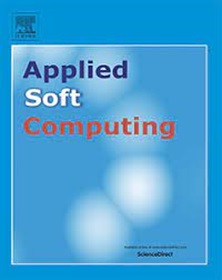Self-supervised learning for Electrocardiogram classification using Lead Correlation and Decorrelation
IF 7.2
1区 计算机科学
Q1 COMPUTER SCIENCE, ARTIFICIAL INTELLIGENCE
引用次数: 0
Abstract
In recent years, the development of deep learning has shown potential in the automatic analysis of electrocardiogram (ECG), aiding cardiologists in detecting cardiovascular diseases (CVDs). Generally, deep learning models depend on numerous labeled ECGs to train, but manual labeling of ECGs is costly as it requires considerable time and expertise. Self-supervised learning (SSL) can solve this problem by pretraining deep learning models with unlabeled ECGs, mitigating their reliance on labeled ECGs. This work proposes lead correlation and decorrelation (LCD) for effective and efficient SSL of ECGs. Concretely, LCD combines intra-lead correlation, inter-lead correlation, intra-lead and inter-lead decorrelation in pretraining. These mechanisms utilize multilead ECG characteristics: intra-lead invariance, inter-lead invariance, inter-lead variance, and intra-lead redundancy. After pretraining, LCD can provide a generic encoder for feature extraction of any ECG lead in a classification task. Benefitting from the effective pretraining mechanism, models with the encoders pretrained by LCD outperform most of the baselines. Compared with the best baseline, they achieve better/comparable classification performances in the same tasks with less pretraining time. Furthermore, LCD helps the models focus on critical features when training with insufficient labeled ECGs, reducing the reliance on labeled ECGs by 46. All the results demonstrate that LCD is an effective and efficient method, boosting a broader application of deep learning to automatic ECG analysis. The code is available at https://github.com/Aiwiscal/ECG_SSL_LCD.
求助全文
约1分钟内获得全文
求助全文
来源期刊

Applied Soft Computing
工程技术-计算机:跨学科应用
CiteScore
15.80
自引率
6.90%
发文量
874
审稿时长
10.9 months
期刊介绍:
Applied Soft Computing is an international journal promoting an integrated view of soft computing to solve real life problems.The focus is to publish the highest quality research in application and convergence of the areas of Fuzzy Logic, Neural Networks, Evolutionary Computing, Rough Sets and other similar techniques to address real world complexities.
Applied Soft Computing is a rolling publication: articles are published as soon as the editor-in-chief has accepted them. Therefore, the web site will continuously be updated with new articles and the publication time will be short.
 求助内容:
求助内容: 应助结果提醒方式:
应助结果提醒方式:


